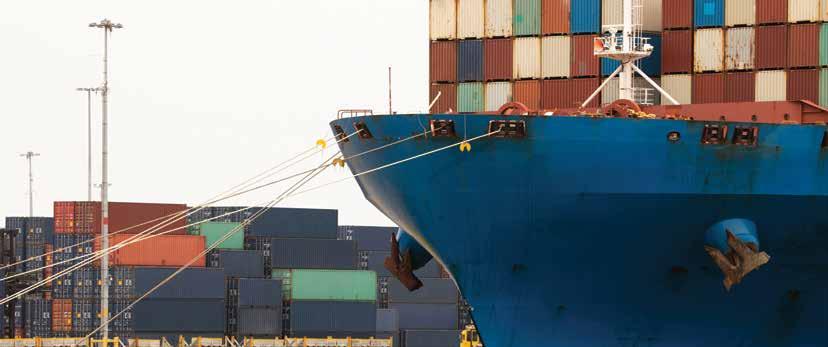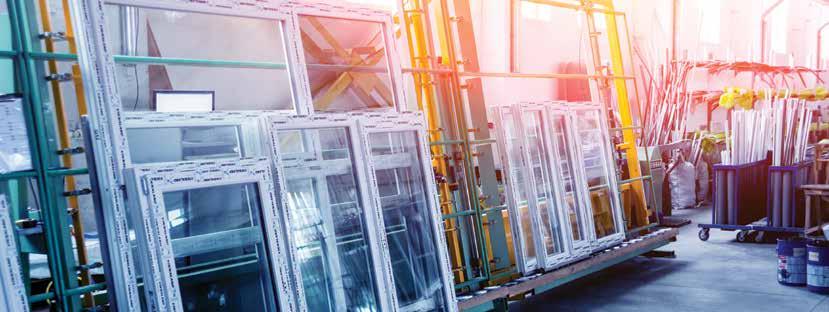
4 minute read
SUPPLY CHAIN DISRUPTIONS CHALLENGE THE BUILDING
SUPPLY CHAIN DISRUPTIONS Challenge the Building Industry
by Carol Rich
Supply chain problems are wreaking havoc on builders’ scheduling, pricing, ability to find basic building materials — and even the product choices they can offer their buyers.
“Supply chain issues are impacting our industry at every level,” says Jon Melchi, executive director of the BIA. “It seems the moment one area gets smoothed out, another arises. This has made it a challenge to schedule labor and there is a real sense of frustration at all levels, including the homebuyer.”
Nationally as well as locally, builders are dealing with difficulties finding the products they need to do their jobs. According to Zonda, a housing market research firm, more than 90% of the builders they surveyed in November 2021 reported that they had experienced supply problems. NAHB’s Chief Economist, Robert Dietz, says that builders are reporting shortages of essentials such as windows, doors, flooring, appliances and garage doors. The upshot of the spiraling problems caused by supply chain gridlock: slowdowns in workflow and rising home prices. Builders have had to reschedule work crews when material deliveries are delayed, adding complications to their process and extra weeks to project completion. In many cases, builders have had to pass higher prices on to their buyers. And they’ve also had to face buyers who are upset about wait times and shrinking product choices.
“The price and availability of building materials, and the supply chain in general, remains the most pressing, immediate challenge for builders as they seek to add housing supply,” said Chuck Fowke, chairman of NAHB and a custom home builder from Tampa.
What’s behind the supply chain snarl? Issues related to the pandemic have caused factories to close or run at low capacity. Factors ranging from truck driver shortages to weather-related incidents to cargo piling up at ports, have kept products and building materials out of builders’ hands.
Nationally, while supply side challenges caused single-family starts to slow in December 2021, starts still managed to post double-digit gains during all of last year. In 2021 in central Ohio, home prices and sales hit record highs. And according to realtor.com, Columbus is projected to continue this trend in 2022. A strong job market is attracting people to our area, and that will only grow stronger since Intel’s semiconductor plant will bring thousands of jobs to central Ohio in the next few years.
How builders are coping
With a strong number of prospective buyers, and inventory at historic lows, builders are scrambling to find coping strategies and workarounds so they can meet market demand.
For example, builders have sought out different suppliers when they’re unable to purchase needed products
Story continues on page 20

Supply Chain Disruptions cont.
from their usual sources. They’ve also looked into goods and materials they can substitute. Some builders are ordering essentials, like windows, months before they would normally purchase them.
In an effort to track down necessary items, building companies have even turned to big box stores and online searches. Epcon Communities reported to the Wall Street Journal that they purchased metal shower grab bars online when they weren’t available from building suppliers. “The company’s electrical subcontractor resorted to buying electrical boxes in hardware stores,” said Stew Walker, Epcon’s vice president of construction. “From one week to the next, the only thing we know is that we’re going to get notified of something else that is unavailable.” Craig Tuckerman, president of The Tuckerman Home Group, Inc., agrees. When he talks about product shortfalls with his buyers, he draws parallels to the product scarcities and delays they are seeing first hand in their own lives.
“I ask, ‘how are things in your office and your home? Are you able to find what you need at the grocery and other stores?’ This really puts things into perspective,” he says. Often his buyers start to commiserate about the problems they’ve had finding products themselves.
Garage doors have become notorious for their long lead times, jumping from the eight to 10 week leads of previous years to the current 26 week wait. Buyers have sometimes had to move into homes with temporary garage doors that are swapped out when the preferred one finally arrives.
Communicating with buyers
For many builders, one of their toughest challenges is finding ways to communicate with buyers who are stressed by lengthy wait times and unavailable products. “It will be imperative that builders remain in constant communication with their customers on delays and challenges,” says Melchi. “People are seeing shortages everywhere, from the grocery store to restaurants, so I believe that people will understand so long as they feel they are being kept up to speed.”
Tuckerman explains to his clients that the frustrations they face are affecting his other buyers too. And that all builders — residential and commercial, both locally and nationally — are grappling with similar supply chainrelated issues. "It will be “We also explain to them that some of our delays are due to being faithful to our imperative that trades we have worked with for years,” builders remain he says. By working with companies he knows and trusts, Tuckerman observes, he in constant lessens the chance of poor product quality communication with their or warranty issues down the road. “It is more beneficial to our buyer to wait for the guys that know us, as we know them,” customers on he emphasizes. delays and “For our buyers and our trades, we are challenges." honest, but direct with them. Patience and understanding,” Tuckerman says. “And we explain that the vast majority of all of this is way out of our control. They don’t like to hear it, but they do understand and accept it.”






